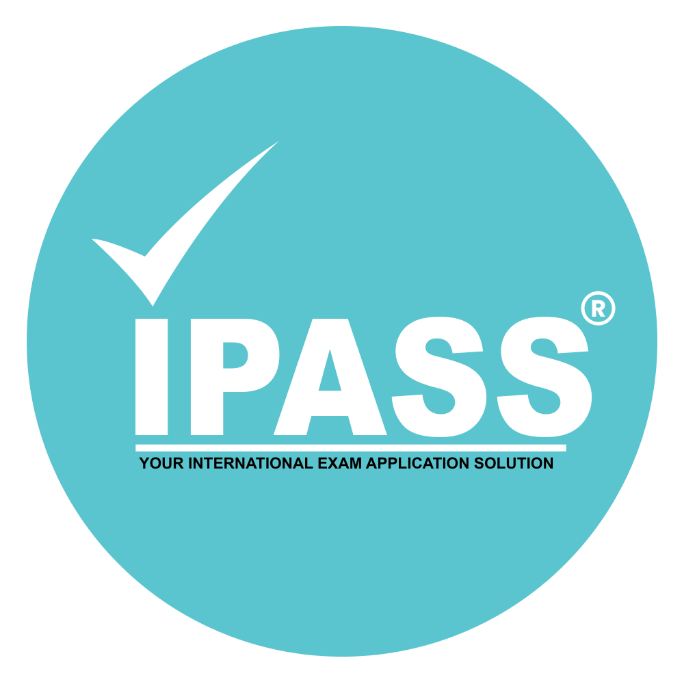Your cart is currently empty!

AHPRA Registration 2025: Updated Pathways for IQRNs
(Estimated reading time: 12 minutes)
Effective April 2025, Australian Health Practitioner Regulation Agency (AHPRA) will implement updated registration requirements for Internationally Qualified Registered Nurses (IQRNs). This includes two new pathways developed to acknowledge and streamline the registration process for IQRNs with substantial experience.
These updates will align with the Nursing and Midwifery Board of Australia’s registration standard. The standard specifies eligibility criteria for internationally qualified registered nurses applying for general registration. Importantly, the NMBA will assess each application based on its individual merits.
Understanding the New AHPRA Registration Standard
The April 2025 update includes a new registration standard specifically designed for IQRNs. Titled “General Registration for Internationally Qualified Registered Nurses,” this standard represents a fundamental shift in how Australia evaluates and processes international nursing qualifications.
Timeline for Implementation
The new registration standard is scheduled to come into effect in April 2025, following extensive consultation with healthcare stakeholders, professional bodies, and international partners. Moreover, AHPRA and the NMBA have announced that there will be a transition period to ensure that applicants currently in the system are not disadvantaged by the changes.
From April 2025, all new applications will be processed under the updated framework, with existing applications being given the option to transition to the new pathways where advantageous to the applicant.
Goals and Objectives of the New Standard
Several key objectives drive the introduction of this new standard including the following:
1. Addressing Workforce Shortages
Australia, like many countries, faces significant nursing shortages. The COVID-19 pandemic exacerbated these challenges, highlighting the need for more efficient recruitment of qualified international nurses.
2. Streamlining Bureaucratic Processes
Healthcare professionals criticize the current system for its lengthy processing times and complex requirements, which can discourage qualified nurses from applying.
3. Recognizing International Experience
The new standard acknowledges that nurses with substantial experience in comparable healthcare systems often require less adaptation to practice effectively in Australia.
4. Maintaining Patient Safety
Despite the streamlining, the standard ensures that all registered nurses meet essential requirements to protect public safety.
The new standard has been developed with a dual focus. First, this is to address Australia’s nursing workforce challenges. Second, to ensure that all registered nurses meet the rigorous professional standards required to deliver safe, high-quality healthcare. By recognizing the valuable experience and qualifications that international nurses bring to Australia, the standard aims to create more equitable pathways to registration.
Previous AHPRA Registration Challenges for IQRNs
Understanding the significance of these changes requires some context about the previous registration process for IQRNs. In the past, internationally qualified nurses dealt with complex registration processes in Australia. Also, these procedures were often time-consuming, regardless of nurses’ experience or training background.
The previous system typically involved:
- Detailed qualification assessments
- Mandatory completion of the Outcomes-Based Assessment (OBA)
- Clinical examinations and interviews
- Supervised practice periods
- Multiple verification stages
For many qualified nurses, this process could take 9-12 months or longer, creating significant barriers to entry. Eventually, this contributes to ongoing workforce shortages across Australia’s healthcare system.
New Streamlined Pathways for IQRNs for Australia
The most significant aspect of the April 2025 updates is the introduction of two additional registration pathways specifically designed for eligible IQRNs. These pathways recognize and value the experience of nurses who have practiced extensively in healthcare systems comparable to Australia’s.
Pathway 1: Recognition of Comparable Jurisdiction Qualification and Experience
The first pathway focuses on nurses who obtained their qualifications in NMBA-approved comparable jurisdictions. To qualify under this pathway, applicants must:
- Hold a relevant nursing qualification from an NMBA-approved comparable jurisdiction that led to general registration.
- Have completed at least 1,800 hours of practice as a registered nurse in an NMBA-approved comparable jurisdiction since 1 January 2017.
- Hold current or previous general registration as a registered nurse in an NMBA-approved comparable jurisdiction (no specific timeframe requirement for when this registration was held).
- Obtain a Certificate of Good Standing from the relevant regulatory authority.
- Meet all mandatory registration standards, including:
- Criminal history check
- Continuing professional development (CPD)
- English language proficiency
- Recency of practice
- Professional indemnity insurance arrangements
Note: Relevant qualifications may include hospital-based training programs that were approved for registration at the time of completion in an NMBA-approved comparable jurisdiction.
Pathway 2: Recognition of Non-Comparable Jurisdiction Qualification with Regulatory Examination
The second pathway focuses on nurses who obtained their qualifications outside NMBA-approved comparable jurisdictions but have subsequently passed regulatory examinations. To qualify under this pathway, applicants must:
Qualification Requirements
- Hold a relevant nursing qualification that was not obtained in an NMBA-approved comparable jurisdiction.
- Have successfully completed a regulatory examination for internationally qualified registered nurses in an NMBA-approved comparable jurisdiction.
Competency Requirements
- Competency is verified through the successful completion of a regulatory examination in an NMBA-approved comparable jurisdiction.
Other Requirements
- Hold current or previous general registration as a registered nurse in an NMBA-approved comparable jurisdiction specifically since 1 January 2017.
- Have completed at least 1,800 hours of practice as a registered nurse in an NMBA-approved comparable jurisdiction since 1 January 2017.
- Meet all mandatory registration standards, including:
- Criminal history check
- Continuing professional development (CPD)
- English language proficiency
- Recency of practice
- Professional indemnity insurance arrangements
List of NMBA-Approved Comparable Jurisdictions
The NMBA has identified several jurisdictions whose nursing qualifications and practice standards are considered comparable to Australia’s. As of the April 2025 update, these include:
- United Kingdom
- Ireland
- United States
- Canada (specifically British Columbia and Ontario)
- Singapore
- Spain
This list has been developed based on comprehensive analysis of international nursing education standards, clinical practice requirements, and healthcare system similarities. The NMBA has indicated that this list may be expanded in the future as additional assessments are completed.
Benefits of the New AHPRA Registration Process
Internationally qualified nurses can gain significant advantages through the new AHPRA Registration Pathways. Key benefits include:
Reduced Processing Times
One of the most significant advantages of the new registration pathways is the reduction in processing times. Under the current system, IQRNs typically wait 9-12 months from application to registration. The new streamlined process aims to reduce this to:
- 1-3 months for highly qualified applicants from comparable jurisdictions with substantial experience
- 3-6 months for applicants requiring some additional assessment
This acceleration will allow qualified nurses to enter the Australian workforce more quickly, benefiting both the healthcare system and the nurses themselves.
Cost Savings for AHPRA Registration Applicants
The financial burden of international registration has been a significant barrier for many nurses. The new pathways are expected to generate substantial cost savings through:
- Elimination of certain examination fees for eligible applicants
- Reduced need for international travel for assessments
- Shorter waiting periods, allowing nurses to begin earning sooner
- Less paperwork and fewer documentation requirements
These savings could amount to thousands of dollars for individual applicants, making Australia a more attractive destination for international nursing talent.
Impact on Australia’s Healthcare System
The streamlined registration process is expected to have several positive effects on Australia’s healthcare system:
- Addressing Critical Shortages
More efficient registration will help fill vacant positions more quickly, particularly in high-need areas. - Improved Diversity
A more accessible registration process will likely attract a wider pool of international talent, bringing diverse perspectives and approaches to patient care. - Enhanced Competitiveness
By aligning with international best practices in registration, Australia can better compete for global nursing talent. - Reduced Recruitment Costs
Healthcare facilities will likely see reduced costs associated with lengthy recruitment processes and temporary staffing solutions.
Industry experts predict that these changes could bring thousands of additional qualified nurses into the Australian healthcare system within the first two years of implementation.
Maintaining Professional Standards for the AHPRA Registration
While the new pathways significantly streamline the registration process, AHPRA and the NMBA have emphasized that there will be no compromise on the standards required to practice nursing in Australia.
Mandatory Registration Requirements
All IQRNs, regardless of which pathway they follow, must still meet the following mandatory requirements:
- Qualification Verification
All qualifications must be verified through appropriate channels - Identity Checks
Necessary background checks and identity verification processes remain to be one of the major requirements - Criminal History Checks
Both Australian and international criminal history checks are required - Declaration of Practice History
Applicants must provide a complete practice history with no unexplained gaps - Professional Indemnity Insurance
Evidence of appropriate insurance coverage is still required
These requirements ensure that all registered nurses meet the fundamental standards necessary for safe practice.
English Language Proficiency
English language proficiency remains a core requirement under the new standard. All applicants must demonstrate proficiency through one of the following:
- Completion of at least five years of education taught and assessed in English in a recognized country
- Achievement of the required minimum scores in approved English language tests (IELTS, OET, PTE Academic, or TOEFL iBT)
- Completion of a Board-approved English language test preparation program
There are no changes to the minimum scores required in these tests, maintaining Australia’s commitment to ensuring all nurses can communicate effectively in clinical settings.
Recency of Practice Requirements
The recency of the practice standard also remains unchanged. All applicants must demonstrate that they have:
- Practiced as a registered nurse for a minimum of 450 hours in the past five years, or
- Completed a Board-approved re-entry to practice program, or
- Successfully completed a nursing qualification within the past two years
These requirements ensure that all registered nurses have current knowledge and skills relevant to contemporary practice.
How IPASS Processing Can Help With Your Australian Nursing Registration
Navigating AHPRA registration, even with the streamlined pathways in April 2025, can still be complex for internationally qualified nurses. IPASS Processing simplifies the process, including NCLEX Australia, guiding you every step of the way.
Comprehensive Application Support
IPASS manages your registration from start to finish, handling:
- Eligibility assessment to determine your best pathway
- Application preparation with meticulous attention to detail
- Document collection & verification in line with AHPRA standards
- Submission tracking & follow-ups to keep things moving
With IPASS managing the paperwork, you can focus on your career and relocation.
Expert Guidance on New Pathways
With regulatory changes coming, understanding your best route is crucial. IPASS provides:
- Personalized pathway recommendations based on your qualifications
- Strategic advice to strengthen your application
- Insights into country-specific requirements for nurses from the UK, Ireland, US, Canada, Singapore, and Spain
Our expertise helps you avoid delays and ensures a smooth process.
Hassle-Free Documentation & Verification
IPASS simplifies documentation by offering:
- Custom checklists tailored to your pathway
- Certification & verification assistance with employers and institutions
- Translation coordination for non-English documents
Our attention to detail minimizes delays and ensures compliance with AHPRA’s requirements.
Real-Time Application Tracking
Stay informed with:
- Regular updates & tracking via our client portal
- Proactive issue resolution to prevent setbacks
- Direct AHPRA communication when needed
By partnering with IPASS Processing, you gain expert support, reduced stress, and a streamlined registration process—helping you transition smoothly into nursing practice in Australia.
Conclusion
Australia’s April 2025 AHPRA registration updates create efficient pathways for internationally qualified nurses from comparable jurisdictions. The streamlined system reduces processing times while maintaining rigorous professional standards for patient safety. These changes make Australia more attractive for qualified nurses seeking international opportunities.
Nurses considering relocation should research specific requirements applicable to their individual qualifications and country of origin. Early preparation enables smooth transitions and maximizes opportunities available through these welcome registration reforms.
Contact IPASS Processing today to navigate your nursing registration journey with expert guidance every step of the way. Schedule a one-on-one free consultation with IPASS so that we can guide you on your Australian nursing dream!
Frequently Asked Questions About the AHPRA Registration Update 2025
1. Will the new pathways affect nurses who are already registered in Australia?
No, these changes only affect new applicants seeking initial registration in Australia. Nurses who are already registered will continue under their existing registration without any need for additional steps.
2. Can nurses from countries not listed as “comparable jurisdictions” still apply for registration?
Yes, nurses from all countries can still apply for registration in Australia. Those from non-listed countries will follow the standard assessment pathway, which remains available alongside the new streamlined options.
3. Will the processing fee for registration applications be reduced under the new system?
While the application fees themselves may not significantly change, eligible applicants will likely save money through reduced assessment requirements, elimination of certain examination fees, and shorter processing times.
4. If I’m currently in the middle of the application process, should I wait for the new system?
AHPRA has indicated that there will be transition arrangements for applicants who are already in the system when the changes take effect. In some cases, it may be advantageous to continue with your current application rather than waiting. It’s advisable to contact IPASS so our processing experts can give guidance specific to your situation.
5. How often will the list of comparable jurisdictions be reviewed and updated?
AHPRA and the NMBA have committed to regularly reviewing the list of comparable jurisdictions. While no specific timeframe has been announced, it’s expected that reviews will occur at least every 2-3 years, with the possibility of additional countries being added as assessment processes are completed.
6) If I’m currently in the middle of the application process, should I wait for the new system?
AHPRA has indicated that transition arrangements will exist for applicants already in the system when changes take effect. In some cases, continuing your current application may be better than waiting. We recommend contacting IPASS Processing to check your best options. Our seasoned experts can assess your qualifications to help streamline your application process.
Recommended Reads
- AHPRA Registration 2025: Updated Pathways for IQRNs
- The Benefits of Pursuing a Midwifery Career in the UK
- Types of Nurses: Discover Your Perfect Nursing Path
- IPASS Online NCLEX RN Review Course Now on Its 17th Cycle
- Pearson Vue NCLEX Testing Centers in the Philippines
Recommended Topics
- ASCPi (1)
- Australia (8)
- Canada (5)
- Exam Tips (28)
- General (120)
- IPASS Events (10)
- IPASS News (130)
- Middle East Nursing (17)
- NCLEX (62)
- New Zealand (3)
- NMBI Ireland (1)
- Online Review (13)
- PNLE Online Review (1)
- Tourist Visa (1)
- UKNMC (1)
- US Nursing (12)
- UWorld (1)
- VisaScreen (3)








Leave a Reply